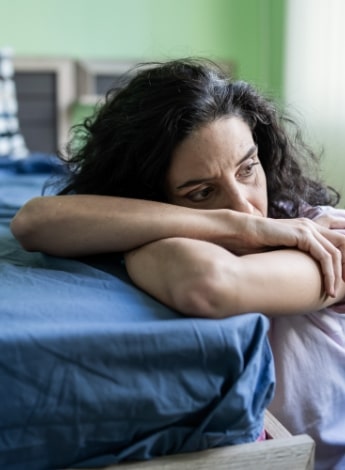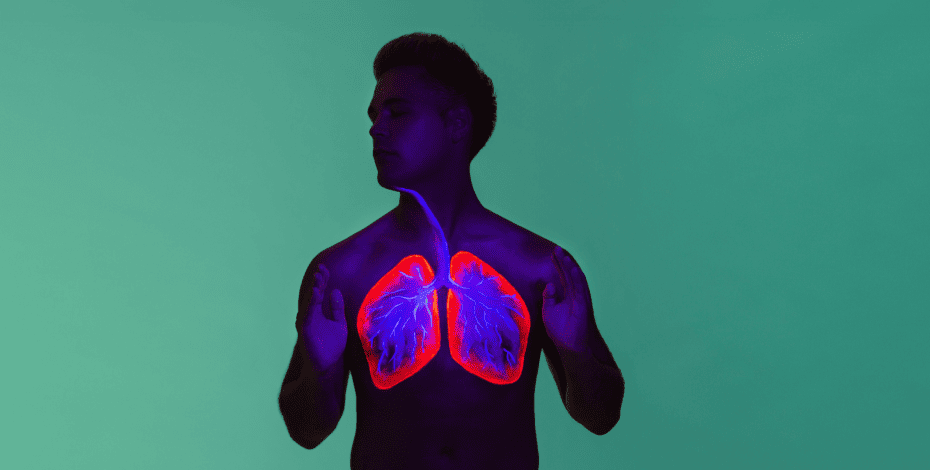
Physiotherapy and post-traumatic stress disorder

Ruth Lira, Richard Modderman, Albert Tseng and Ellen Lake from the APA Mental Health national group present five discussion points on how physiotherapists can support people with post-traumatic stress disorder.
1. It is important to understand post-traumatic stress disorder

PTSD is associated with multiple emotions, such as guilt, shame, anger, fear and anxiety.
The Diagnostic and Statistical Manual of Mental Disorders (DSM-5-TR), fifth edition (American Psychiatric Association 2013), classifies post-traumatic stress disorder (PTSD) as a ‘trauma- and stressor-related disorder’.
Prior to 2013, it was classified as an ‘anxiety disorder’.
This shift in diagnostic category acknowledges that PTSD is associated with multiple emotions, such as guilt, shame and anger (not just fear and anxiety), and is related to an initiating adverse event or events (Pai et al 2017).
Diagnosis requires exposure to a traumatic event, defined as exposure to death or threatened death, actual or threatened sexual violence, or actual or threatened serious injury.
This may occur through direct exposure, witnessing, learning that a relative or close friend was exposed or indirect exposure to aversive details of trauma (American Psychiatric Association 2013).
Symptoms are classified as re-experiencing (memories, nightmares and flashbacks), avoidance behaviours (avoiding trauma-related thoughts, feelings and external reminders), alterations in cognition and mood (negative affect, decreased interest in activities, exaggerated blame of self or others, negative thoughts about oneself and the world, poor memory recall) and hyper-arousal (irritability, aggression, risky behaviours, hypervigilance, difficulty sleeping) (BrainLine 2018).
Symptoms must be present for at least one month, must be causing distress or functional impairment and must not be due to medication, substance use or other illness (BrainLine 2018).
2. Trauma-informed care can be integrated into physio practice
Individual trauma has been defined as ‘an event, series of events, or set of circumstances that is experienced by an individual as physically or emotionally harmful or life threatening and that has lasting adverse effects on the individual’s functioning and mental, physical, social, emotional, or spiritual well-being’ (Substance Abuse and Mental Health Services Administration 2014).
While not all will go on to develop PTSD, over 70 per cent of Australians have had an experience that meets the criteria for a traumatic event, such as bushfires, motor vehicle accidents, war or sexual violence (Phoenix Australia 2022).
In addition, people may experience complex trauma, described as repeated, ongoing and often extreme interpersonal trauma, including violence, abuse, neglect and exploitation.
Complex PTSD, although not recognised within the Diagnostic and Statistical Manual of Mental Disorders, is recognised within ICD-11: International Classification of Diseases for Mortality and Morbidity Statistics, 11th revision (World Health Organization 2019/2021).
Trauma may also be passed down through generations.
Trauma-informed care is based on awareness of the high prevalence of trauma in the lives of people seeking services (Isobel et al 2020).
It is a strengths-based approach, grounded in an understanding of the impact of trauma, and emphasises physical, psychological and emotional safety (Hopper et al 2010).
Phoenix Australia lists six principles of trauma-informed care, which can be integrated into physiotherapy policy and practice: trauma awareness, promote safety and trust, rebuild control, focus on strengths, promote connection and communicate belief in recovery.
3. Mind–body exercise can reduce symptoms of PTSD
Physiotherapy can play a part in recovery from PTSD through physical activity and exercise prescription and facilitation of mind–body awareness.
Updated evidence supports the use of sports and exercise-based interventions to manage symptoms of PTSD (Ramos-Sanchez et al 2021), which may help people to improve body awareness, regulate mood and develop coping behaviours in addition to managing their general health.
These physical outlets may also help people with PTSD to be present, enjoy mastering new skills and engage in distraction or motivation-restoring activities (Rosenbaum et al 2015).
The recently revised Australian Guidelines for the Prevention and Treatment of Acute Stress Disorder, Posttraumatic Stress Disorder and Complex PTSD (2021) recommend exercise to promote wellbeing in adults with PTSD.
Mind–body exercise has emerged as an effective tool for managing PTSD symptoms and other mental health problems.
This might mean a combination of psychological strategies, behavioural techniques, body awareness, breathing and traditional exercise, often applied through practices such as yoga, mindfulness and meditation (Zhu et al 2021).
Mind–body exercise is increasingly employed in PTSD therapy and growing evidence demonstrates its positive effect on quality of life, stress reduction and health outcomes (Zhu et al 2021).
4. Service dogs help veterans with PTSD

Service dogs improve PTSD symptoms in veterans and support mental and physical health.
The assignment of service dogs is a way of supporting and augmenting more traditional forms of treatment for veterans suffering from PTSD.
Relationships between dogs and humans have been linked to increased levels of the feel-good hormone oxytocin, which subsequently facilitates improved mood, decreased negative emotions and positive social interactions.
Longitudinal studies have shown an association between service dogs and a reduction in PTSD symptoms, reduced depression and anxiety, less reported sleep disturbance (Whitworth et al 2019) and positive effects on welfare (van Houtert et al 2018).
The veteran needs to provide the service dog with exercise, food and grooming, which enables them to express nurturing and protective behaviours.
This in turn facilitates feelings of responsibility and self-efficacy.
The scheduling of these routine activities relates to ‘behavioural activation’, an effective intervention for depression, and assists in increasing physical activity.
Higher physical activity and exercise levels are protective for depression and can reduce symptoms for people with existing depression (Schuch & Stubbs 2019).
5. Improved sleep quality can reduce PTSD symptoms

Treatments that address sleep problems can help reduce PTSD symptoms.
Alterations in arousal and reactivity in PTSD are associated with sleep disturbance, including poor sleep efficiency (the percentage of time a person sleeps in relation to the amount of time spent in bed), dysregulation of rapid eye movement sleep, increased number of arousals during sleep and nightmares linked to the initial trauma (Swift 2020).
Poor sleep quality is further associated with increased body weight and increased risk for obesity, type 2 diabetes, cardiovascular conditions, mood disorders such as depression and anxiety, and pain (National Institute of Child Health and Human Development 2021).
The poorer sleep quality reported in people during the COVID-19 global health crisis, especially those perceiving the pandemic as threatening, has the potential to worsen existing PTSD symptoms and to increase vulnerability to later PTSD symptoms (Straus et al 2022).
Treatments that address sleep problems may assist in reducing trauma-related symptoms and offer modifiable and protective targets (Straus et al 2022).
Physiotherapists are encouraged to promote and support healthy behaviours and can apply sleep interventions such as sleep hygiene, sleep rituals, physical activity, relaxation and breathing, and education about the impacts of alcohol, caffeine and heavy meals before bed (Staub 2019).
Click here for an infographic poster version of this article.
>> Ruth Lira APAM has worked in private practice for the past 10 years, with experience in motor vehicle injuries, occupational injuries and postoperative rehabilitation. Ruth has an ongoing interest in mental health and has presented on the management of clients with post-traumatic stress disorders. She is the chair of the Western Australian branch of the APA Mental Health group.
>> Richard Modderman APAM works as a senior physiotherapist in mental health at the Princess Alexandra Hospital, providing physiotherapy services in the acute and rehabilitation settings. Richard also works in musculoskeletal private practice and has a particular interest in primary prevention and chronic disease management.
>> Albert Tseng APAM is the chair of the Victorian branch of the APA Mental Health group. Albert works in home care and aged care and is currently studying a postgraduate diploma in animal physiotherapy.
>> Ellen Lake APAM is a clinical physiotherapist and registered counsellor and psychotherapist. Ellen works in private practice with people who present with physical and mental health comorbidity and she also works part-time as a team member with Active Rehabilitation Physiotherapy. Ellen is currently chair of the APA Mental Health national group.
- References
-
1. American Psychiatric Association (2013). Diagnostic and statistical manual of mental disorders (5th ed.)
2. Pai,A., Suris, A. & North, C. (2017). Posttraumatic Stress Disorder in the DSM-5: Controversy, Change and Conceptual Considerations, Behav. Sci., 7(1): 7; doi:10.3390/bs7010007
3. https://www.brainline.org/article/dsm-5-criteria-ptsd
4. SAMHSA’s Trauma and Justice Strategic Initiative (2014). SAMHSA’s Concept of Trauma and Guidance for a Trauma-Informed Approach.
5. https://www.phoenixaustralia.org/consultation-services/trauma-informed-care
6. International Classification of Diseases, Eleventh Revision (ICD-11), World Health Organization (WHO) 2019/2021; https://icd.who.int/browse11
7. Isobel, S., Wilson, A., Gill, K. & Howe, D. (2020). ‘What would a trauma-informed mental health service look like?’ Perspectives of people who access services. Int. Jnrl. Of Mental Health Nursing, p 1; https://doi:10.1111/inm.12813
8. Hopper, E., Bassuk, E. & Olivet, J. (2010). Shelter from the Storm: Trauma-informed Care in Homelessness Services Settings, The Open Health Services and Policy Journal, DOI: 10.2174/1874924001003020080.
9. Rosenbaum S, Vancampfort D, Steel Z, Newby J, Ward PB, Stubbs B. Physical activity in the treatment of post-traumatic stress disorder: a systematic review and meta-analysis. Psychiatry research. 2015 Dec 15;230(2):130-6.
10. Ramos-Sanchez CP, Schuch FB, Seedat S, Louw QA, Stubbs B, Rosenbaum S, Firth J, van Winkel R, Vancampfort D. The anxiolytic effects of exercise for people with anxiety and related disorders: An update of the available meta-analytic evidence. Psychiatry Research. 2021 Aug 1;302:114046.
11. Australian Guidelines for the Prevention and Treatment of Acute Stress Disorder, Posttraumatic Stress Disorder and Complex PTSD, Summary of Recommendation Strategies (2021).
12. Zhu L, Li L, Li XZ, Wang L. Effects of mind-body exercise on PTSD symptoms, depression and anxiety in PTSD patients: A protocol of systematic review and meta-analysis. Medicine. 2021 Jan 1;100(4).
13. Whitworth,J.,Scotland-Coogan, D. & Wharton, T.(2019). Service dog training programs for veterans with PTSD:Results of a pilot controlled study.Social Work in Health Care, 58 (4), 412-430.
14. van Houtert, E.A.E., Endenburg, N., Wijnker, J.J., Rodenburg, B. and Vermetten, E. (2018). The study of service dogs for veterans with Post-Traumatic Stress Disorder: a scoping literature review. European Journal of Psychotraumatology, 9(sup3), p.1518199. doi:10.1080/20008198.2018.1518199.&
15. Schuch,F.& Stubbs,B. (2019). The role of Exercise in Preventing and Treating Depression, Current Sports Medicine Reports, 18(8), p299-304.
16. Swift, K. (2020). Sleep and PTSD: delving deeper to understand a complicated relationship, Sleep,43(9).
17. https://nichd.nih.gov/health/topics/sleep/conditioninfo.inadequate-sleep
18. Straus,L., Dolsen, E., Nishimi, K., Neylan, T. & O’Donovan, A. (2022). Worse sleep, worsening post-traumatic stress disorder(PTSD):Poor sleep quality associated with increases in PTSD symptoms amongst those experiencing high threat of the COVID-19 pandemic, Journal of Sleep Research, https://doi-org.ezproxy.flinders.edu.au/10.1111/jsr.13568
19. Staub, C. (2019). Concept of diverse sleep treatments in physiotherapy, European Journal of Physiotherapy, 21(3), 177-184. -
© Copyright 2024 by Australian Physiotherapy Association. All rights reserved.





